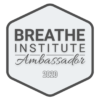When Patients Need More Than Just Orthodontic Care
It seems like a simple formula right? Crooked teeth plus family history equals somebody getting braces.Yet it’s not that simple. Previously, we talked about the different causes of crooked teeth, from genetics, dental accidents, and tongue thrust.
Now with the first two, braces are the solution. A dentist should continue the normal process of referring those patients directly to an orthodontist.
But with tongue thrust, it’s a different answer.
Tongue Thrust
Tongue thrust is a unique cause for crooked teeth because it’s constant pushing against the front of the mouth. While braces may help correct the teeth, that constant pressure slows and negates the work.Even if an orthodontist can get the teeth straight and the tongue thrust isn’t treated, the teeth will start moving back to their original and crooked positions.
What Do You Do Then?
The first step is to find out if the crooked teeth are being caused by tongue thrust or not. Luckily, we have this free guide about how to identify tongue thrust in your patients.
If you believe that they do have tongue thrust, then refer them to a trained orofacial myologist for speech therapy. With proper therapy, it can fix the tongue thrust, and afterward, the patient can be referred to an orthodontist to fix the teeth.
5 Steps to Identify Tongue Thrust
Mouth Resting Posture
The patient’s mouth sits slightly open when relaxed and their tongue rests between or against their teeth.
Swallow Pattern
When the patient swallows, their tongue moves forward or out of their mouth.
Tooth Alignment
- High narrow plate
- Open bite
- A significant overbite or overjet
- Slow tooth emergence
- Bilateral tooth issues
Family History
If a family exhibits symptoms, it is more likely that their children will have tongue thrust, too
Orthodontic History
A patient that has had braces for an unordinary amount of time or multiple times without satisfactory results may have tongue thrust

